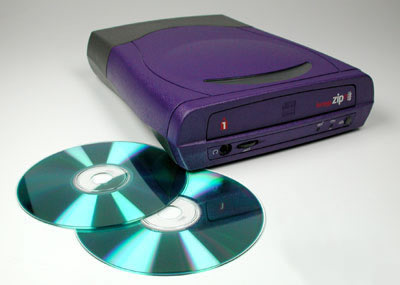In 2000, one of the biggest news stories was the rise of Napster and similar file-sharing programs . With these programs, you could get an MP3 version of just about any song you want without shelling out a dime. The record companies were fairly upset over this turn of events, and understandably so: They weren't making any money off the distribution of their product to millions of people.
 An external writable CD drive, also called a CD burner: With this type of drive, you can take music or data files from your computer and make your own CDs. |
But there was money to be made on the "Napster revolution," as electronics manufacturers and retailers soon discovered. In 1999, 2000 and early 2001, sales of CD burners and blank CD-Recordable discs skyrocketed. Suddenly it was feasible for the average person to gather songs and make their own CDs, and music-mix makers everywhere wanted to get their hands on the means of production. Today, writable CD drives (CD burners) are standard equipment in new PCs, and more and more audio enthusiasts are adding separate CD burners to their stereo systems. In less than five years, CDs have eclipsed cassette tapes as the mix medium of choice.
In this article, you'll find out how CD burners encode songs and other information onto blank discs. We'll also look at CD re-writable technology, see how the data files are put together and find out how you can make your own music mixes with a CD burner.
Back to How It Works
› Introduction to How CD Burners Work
› CD Basics
› Reading & Writing CDs
› Burning CDs
› Erasing CDs
› CD Formats
› Creating Your Own CDs